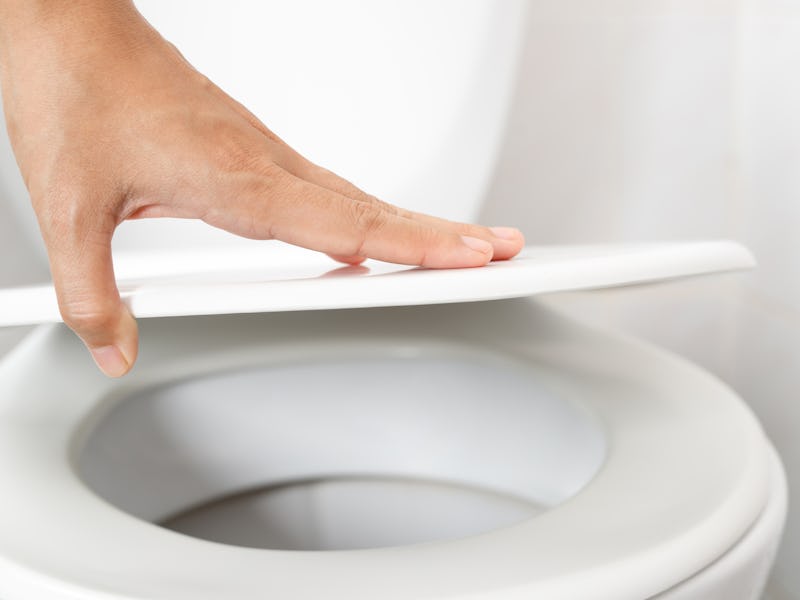Should You Close The Toilet Lid Before Flushing? The Definitive Answer to End All Debates
Shut it and flush it.

Toilet lids are weird. Some toilets have them, while many others don’t. And whether or not you are supposed to use them is its own can of worms.
Various studies have used lasers, surface samples, and ultraviolet light to show that every flush turns your toilet into an invisible fountain, spraying and splattering its contents. In turn, this research demonstrates that a toilet lid is a superb cover against these plumes. The question remains: How much does closing the toilet lid actually reduce our chances of getting sick?
Evan Floyd, professor of occupational and environmental health at the University of Oklahoma Health Sciences Center, understands that uncovered toilet flushes aren’t a priority for many when it comes to staying healthy. “There's not really a whole lot of people getting sick from toilet flushing,” Floyd tells Inverse. “This is not the end of the world.”
But he also recognizes that evidence demonstrates how closing the toilet lid can mitigate our exposure to bacteria and viruses that dwell in toilet bowls.
This invisible gush breaks down into splatter and spray. Splatter comprises tangible droplets that land on nearby surfaces. These droplets contaminate via contact, so you’d have to touch these surfaces to pick up the bacteria they harbor. Spray, on the other hand, is aerosolized water that’s now airborne. Inhaling it could bring on an infection to the respiratory or gastrointestinal system.
Floyd points out that the risk of contracting an infection this way “depends on a lot of factors,” and on a day-to-day basis, it’s not going to be your biggest source of risk for contracting a pathogen. But this fluctuating risk makes it difficult to quantify exactly how much suppressing a toilet flush protects us. However, we do know that some environments are more conducive to illness-by-toilet than others. For example, on cruise ships, “there's not a lot of toilets, and there's a lot of different people using those same toilets,” he says. He adds a high school, for example, may have a “comparable but less dramatic” risk to a cruise liner.
He underscores that closing a toilet lid doesn’t eliminate contamination altogether but greatly reduces it. Those palpable splatter particles that can escape the confines of the bowl are thwarted by the lid, but Floyd says, “the fine particles are really not going to be reduced very much because you still have air that's being formed to a jet” which will escape out the sides.
“Now you're going to spread it out radially instead of in a kind of big plume that goes up,” he tells Inverse. This is to say that while covering a flush greatly reduces pathogen spray, it doesn’t completely eliminate it.
Another factor comes from the pathogen population itself. “Not all pathogens are really that infectious,” he says. Some infections only require two or three pathogens to get you sick, which makes them high risk, while others that require hundreds of pathogens are much lower risk. When you have an emerging infectious disease like Covid-19, however, the risk is unknown because we still have to figure out the threshold that will cause an infection.
Regular sanitation minimizes air and surface contamination. Proper air ventilation also takes care of these aerosols.
Regularly cleaning toilets also lowers the amount of pathogens in a given flush. If the toilet water is dirty, its splatter and spray will be proportionally dirty. After a cleaning, Floyd says toilet water reaches maximum contaminant saturation after four to seven flushes. That means that the first three times you flush a just-cleaned toilet, its plume will get more and more contaminated. By the fifteenth flush, its contamination point will level out, indicating surface contamination from those splatters. With this in mind, the number of times a toilet’s been flushed can inform how often you clean it, as opposed to how many days have passed.
The toilet lid is a glorious tool, and it's best used regularly.
This article was originally published on